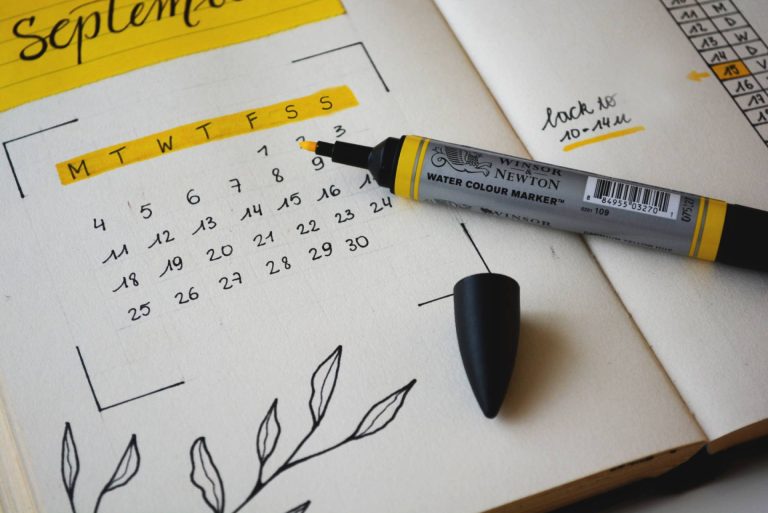3 Strategies to Spring Clean Yourself
Cambridge Dictionary offers two definitions for spring cleaning, as follows: Noun: to clean all of a place, especially your house, very well, including parts you do not often clean. Noun:…


Cambridge Dictionary offers two definitions for spring cleaning, as follows:
Noun: to clean all of a place, especially your house, very well, including parts you do not often clean.
Noun: to organise something, getting rid of the things you do not need.
The month of September is the perfect time for some spring cleaning! Whether you believe that the first day of Spring is on the 1st or the 22nd / 23rd of September, it doesn’t matter! Let’s leave that confusion created by the meteorological (based on temperature cycles) and astronomical (based on the position of the earth) distinction right there where it is. And assume that we have the entire month of September to celebrate Spring and to perform our spring cleaning activities.
Taking my cue from the definitions, my 3 strategies for personal spring cleaning are:
- Getting organised,
- Getting rid of the things you do not need, and
- Cleaning the parts you do not often clean.
And, unlike the common focus on the house, I’m redirecting the spring cleaning concept to the human – mind, heart, and body. These are the 3 simple strategies I apply at the start of Spring, to help me reset myself for a fresh start.
Strategy 1: Re-Evaluate
In the Re-Evaluate strategy, the focus is on “getting organised”. WHY? So that, by the end of the exercise, you are clear on:
- What serves me (fuels me or gives me fulfilment) mentally, emotionally and physically?
- What does not serve me (leaves me depleted or drained) mentally, emotionally and physically?
How to do this?
- Draw a table or spreadsheet with 3 columns and 4 rows (see example below). Then fill the cells or boxes with whatever comes up for you. Take your time when doing this exercise. You are taking stock of what occupies you, and organising that into the categories of “what serves me” and “what does not serve me”.
- Once done, reflect on your entries, for each area (mental, emotional, and body) are you mostly occupied with life-fuelling or life-depleting inventory?
| What serves me | What does not serve me | |
| Mental | Jot down what comes up | Jot down what comes up |
| Emotional | Jot down what comes up | Jot down what comes up |
| Body | Jot down what comes up | Jot down what comes up |
Strategy 2: Re-Move
This strategy, getting rid of the things you don’t need can feel difficult to start because we find safety in holding on… to the very thoughts, feelings and habits that do not serve us in healthy or productive ways.
There are various ways to activate this strategy. If starting your own feels impossible, then I suggest asking for help from a reliable source. This can even come in the form of a good book, a good friend who has done the work in themselves and is experiencing positive shifts in their lives, a skilled therapist, or a life coach. There is no one-size-fits-all.
The point is this: it is a process of letting go that must begin. In my coaching practice, and based on my experience, this can be a complex and sometimes uncomfortable yet rewarding process. The starting point is an awareness of your unconscious habit patterns. And then, once you know your patterns, and the impact they have on you and others, as well as the world around you, you begin the work of choice. Once you are clear about your choice, you are in control of the new habit you will choose to practise to bring about a different experience.
Strategy 3 – Re-Fresh
In the Re-Fresh strategy, cleaning the parts you don’t often clean is all about ensuring that your inventory remains organised and clean. In other words, taking care of yourself. Doing what serves you:
- Mentally,
- Emotionally, and
- Physically
And it is different for every person.
For a guided spring cleaning session, join me for one of my Restorative Retreats. For more information, book a chat with me.
Related posts
The Introduction to the author
From birth to teens The beginning of me was 2 June 1973, born to Minnie Petersen and Phillip Strong, in…
The 9 things I learned on my Enneagram journey in 2023
The Enneagram body of work is not short of definitions and meanings of this concept. I will quote two, to…
Finding your voice in the team – 3 strategies on how to give voice to your thoughts
Google defines voice as follows: Noun: the sound produced in a person's larynx and uttered through the mouth, as speech…


